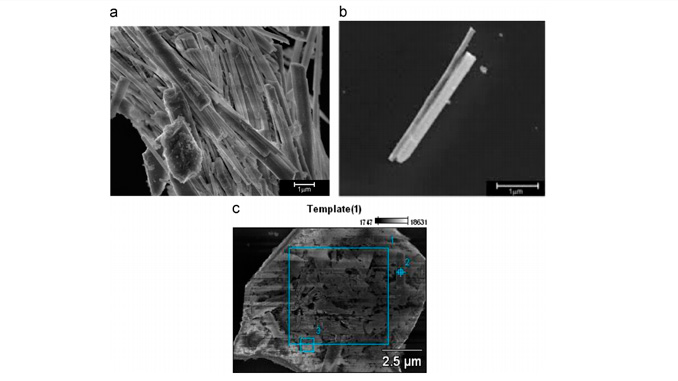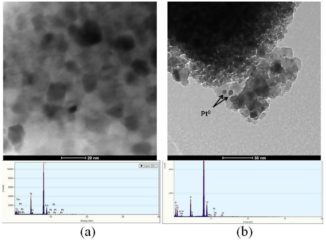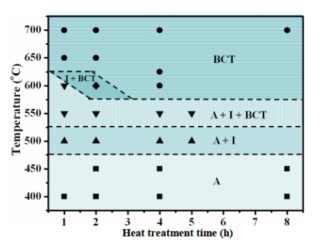
Writers: M.G.A. Ranieri; E.C.Aguiar; M.Cilense; A.Z.Simões; J.A Varela.
Keywords: A. Ceramics; B. Chemical syntheses; B. Powder metallurgy; C. X-ray diffraction.
Abstract: Bismuth titanate templates (Bi4Ti3O12) were synthesized by the molten salt method in Na2SO4 and K2SO4 fluxes, using an amorphous Bi4Ti3O12 precursor and a mechanically mixed Bi2O3+TiO2 mixture as the starting materials. The templates were characterized by means of X-Ray Diffraction, FT-IR, FT-Raman, FEG-SEM and TEM. The templates are free of secondary phases and present orthorhombic structure with orientation in the c-plane. FT-IR suggests no traces of sulfate groups revealing that the molten salt synthesis was beneficial for elimination of inorganic species and for the arrangement of individual nanocrystals into ordered lattices. FEG-SEM analyses of BIT templates revealed that most of the grains were homogeneous with a length of 3.1 µm and a width of 0.3 µm and had plate-like morphology. TEM investigations show that the c-axis of the perovskite units is parallel to the thickness direction of the grains and no liquid-phase was formed during BIT phase formation.




